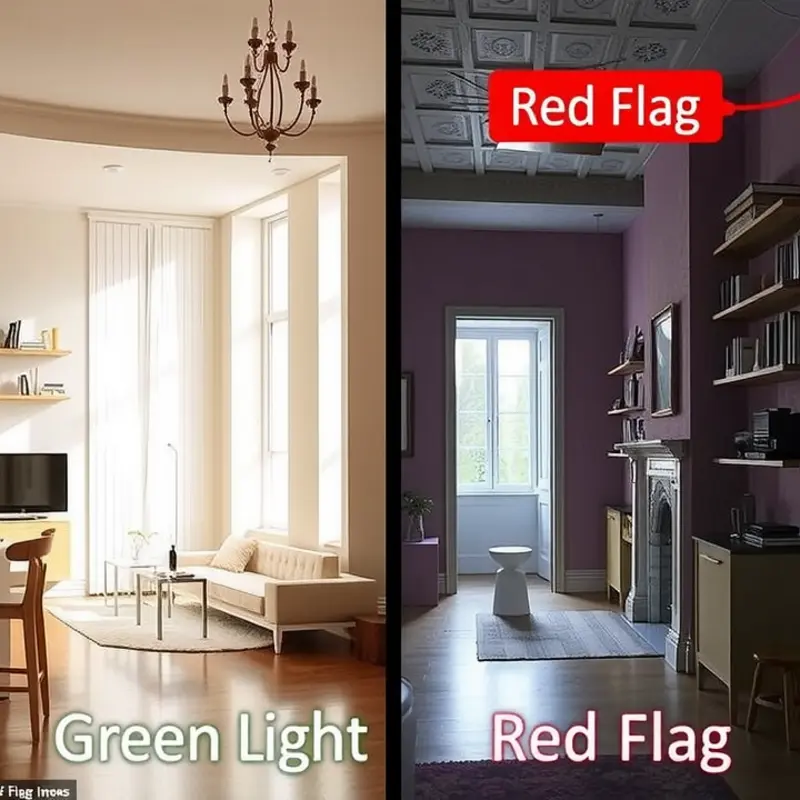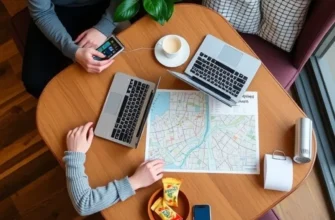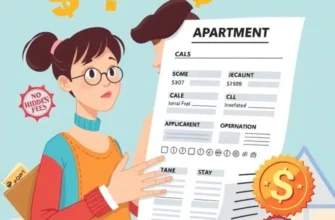Let’s be real; apartment hunting can feel like a scavenger hunt with no treasure map. From the cozy studio to the sprawling family home, finding the right place can turn into an exhausting game of hide-and-seek. But with remote apartment hunting on the rise, you can swap those endless weekend viewings with some good ol’ couch scrolling. Imagine browsing through listings while sipping your favorite brew—no awkward small talk with landlords or waiting in lines for a chance to see that one-bedroom marvel. Whether you’re a young professional craving a work-from-home oasis, a couple dreaming of a romantic nook, or a family hoping for a spacious haven, this modern approach allows you to explore countless options faster than you can say ‘lease agreement.’ So kick off those shoes, grab that snack, and get ready to unlock the secrets of finding your ideal rental from wherever you are!
Tech-Savvy Hunting: Tools That Make Life Easier

The era of remote apartment hunting comes with technological wonders that make the process insightful and intuitive. For first-time renters and busy professionals alike, leveraging these tools can transform what was once a daunting task into an efficient and even enjoyable experience.
Navigating the myriad of online listings is the first step. Numerous platforms present aggregated listings, complete with filters for location, price, and amenities. By setting detailed search parameters, you can quickly narrow down your options. Some tools allow you to save your searches and get notifications when new listings matching your criteria appear, keeping you updated without constant checking.
Virtual tours have revolutionized the apartment hunting landscape. With high-resolution images and 3D walkthroughs, prospective tenants can explore properties as if they were physically present. This is especially beneficial for those relocating to a new city or state. You can navigate each room, assess space layouts, and visualize your potential new home down to the smallest detail. For more on immersive online tour experiences, check out our guide on online apartment tours.
Further enhancing the process are augmented reality (AR) apps, which allow users to superimpose virtual furniture and decor into any room. This tool is invaluable for those planning on how their furniture will fit in new spaces, giving instant clarity on whether a unit will meet their spatial and aesthetic needs.
Virtual communication technologies like video conferencing take virtual touring a step further by facilitating live tours, where prospective renters can ask questions in real-time. These sessions help establish a rapport with property managers and can clarify nuances not covered by images or written descriptions. It’s an opportunity to inquire about everything from parking options to community regulations.
For those unfamiliar with specific neighborhoods, mapping apps that include details on crime rates, schools, public transport options, and local amenities provide a comprehensive view of each area. Integrated reviews and community feedback can further aid in understanding the vibe and livability of a region. Ensuring your future apartment aligns with your lifestyle priorities is crucial, and these tools offer valuable insights.
Lastly, documentation and organizational apps come in handy as well. Managing lease agreements, background checks, and other paperwork digitally saves time and reduces the chance of losing critical documents. Sharing files quickly with prospective landlords is a breeze, expediting the process and giving you more control over your rental journey.
By integrating these tech tools into your apartment search, you’re not just looking for a place to live—you’re stepping into an informed and strategic home-finding process. These digital resources empower renters, making what once felt like a scavenger hunt a seamless blend of discovery and decision-making.
Red Flags and Green Lights: What to Look For

Hunting for an apartment remotely introduces unique challenges, requiring keen observational skills to discern potential issues. Start by examining the listing photos closely. Are they clear, well-lit, and comprehensive? Photographs that focus on decorative elements but omit larger views can mask problems like cramped spaces or lack of natural light. Be wary of listings with few images or pictures that look overly polished, as they may not represent the actual condition of the unit.
Detailed communication with the landlord or real estate agent is essential. If they are vague about answering questions, it could indicate a lack of transparency. Ask pointed questions about utilities, lease terms, and any recent repairs or updates. If their answers are unclear or seem evasive, consider it a red flag.
Another red flag is the requirement of excessive up-front fees. While security deposits and application fees are standard, demands for large advance payments beyond these should raise suspicion. Additionally, verify who will process your payments. If the landlord prefers cash transactions or wiring money without a formal process, tread carefully.
Check the rental’s online reputation. Sites that offer tenant reviews can provide valuable insights into the property’s management. Consistent complaints about maintenance issues or poor communication suggest you might experience similar frustrations.
Turning to green lights, certain factors are strong indicators of a reliable rental opportunity. Quick and clear responses to inquiries not only convey professionalism but also indicate responsible management.
Furthermore, comprehensive listings that provide detailed information about the unit, building, and neighborhood signify transparency. Access to virtual tours or live video walkthroughs is another positive sign, enabling you to explore the space remotely.
Consider researching the neighborhood’s amenities and transport links, particularly if the virtual listing highlights them. For guidance on evaluating neighborhoods, consider checking out affordable neighborhoods in Miami. This not only verifies the listing’s claims but can help determine if the area complements your lifestyle.
Finally, take into account the landlord’s willingness to negotiate lease terms or provide references from previous tenants. A proactive landlord who aims to accommodate tenant needs typically ensures a smoother renting experience.
As you navigate remote apartment hunting, balancing these red flags and green lights will help you make an informed decision. The right preparation and vigilant assessment can lead you to your next home sweet home, even from afar.
Final words
Remote apartment hunting doesn’t have to be a chore. With the right tools and a keen eye for what to expect, you can make this digital journey enjoyable and productive. Your dream abode is out there—whether it’s a compact studio decorated with fairy lights or a spacious family nest. Just remember to stay organized, communicate clearly with landlords, and trust your instincts. Don’t rush into anything; the perfect place deserves the right amount of consideration. Adjust that Wi-Fi, have snacks at the ready, and make apartment hunting your new favorite pastime. Happy hunting!









